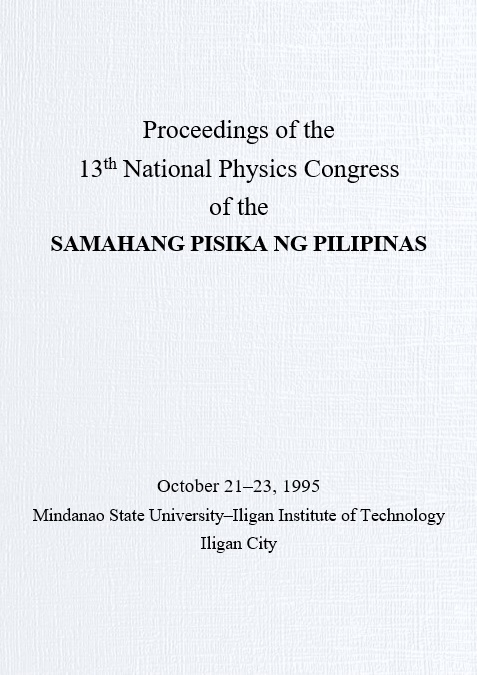The Cd-H complex in crystalline silicon under uniaxial stress
Abstract
The PAC (Perturbed Angular Correlation) measures the time dependent variation of the radiation characteristics of γ quanta. These are emitted from a probe atom, generally 111In to 111Cd. The modulation is caused by hyperfine interaction between the charge distribution ofthe probe atom and that ofthe environment, i.e. the electric quadrupolc interaction.
The PAC is only sensitive to charge distributions within the very nearest surroundings, due to r-3 dependence, thus the PAC is prcferrentially used for investigations of complexes in semiconductors, consisting of probe atom and adjacent defects (lattice defects and impurities). Using the PAC technique in cubic crystals is advantageous since the electric field gradient (EFG) vanishes on substitutional sites. Therefore the EFG results only from the charge distribution of the defect, allowing to identify it by its specific modulation frequency, comparable to a fingerprint.
Hydrogen is easily incorporated into silicon by cleaning and etching; it is also widely used for passivation of dangling bonds. Some information about the diffusion mechanism can be achieved by stress experiments, the pressure assumingly changing the sites of hydrogen. It is assumed that hydrogen moves from one interstitial site (between two silicon atoms on the Si-Si bond axis) to another interstitial site.
It was expected that PAC experiments with Cd-H complexes in silicon under pressure could yield some further information about the diffusion of hydrogen. Four experiments with uniaxial stresses in <100> and <111> up to 8.0 kbar were conducted. In atoms were implanted into a silicon sample via ion implantation, hydrogen was diffused into the sample in a hydrogen plasma chamber, thus forming In-H complexes. Then it was placed into a pressure cell that kept the pressure constant for several hours.
It was observed that the modulation frequency decreased, the damping ofthe spectra increased, and the ratio of the frequency triplet changed, indicating the appearance of the asymmetry parameter η. Also the frequency triplet seemed to split up, indicating two close EFGs.
The increase in damping is probably due to a strong inhomogenity of the applied stress. The asymmetry parameter indicates that the symmetry of the complex is lowered by uniaxial stress. Due to the strong damping a good fitting with fit functions was quite hard. It was not possible to give a satisfactory unequivocal explanation of all these observations. Possibly a mixture of several effects is involved.
One possible way to explain the frequency splitting is to consider the change of symmetry of the complex. It is well known that the symmetry in crystals is fundamental. The energetic degeneration of the bands is caused by the point symmetry of the lattice element. If the point symmetry is lowered by uniaxial stress, a (at least partial) neutralization of the energetic band degeneration is expected.
The Cd-H complex in silicon forms a shallow acceptor with an energy level of 76 meV above the valence band. From the splitting of the PAC spectra a splitting of the acceptor level in the range of 1 meV per kbar can be deduced. This is comparable to energy splittings of similar acceptor complexes (Be-H and Zn-H in silicon).
Downloads
Issue
21-23 October 1995, Mindanao State University–Iligan Institute of Technology, Iligan City











